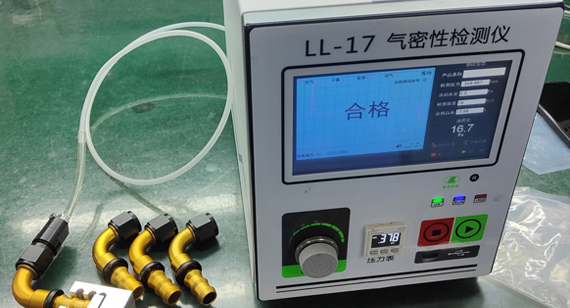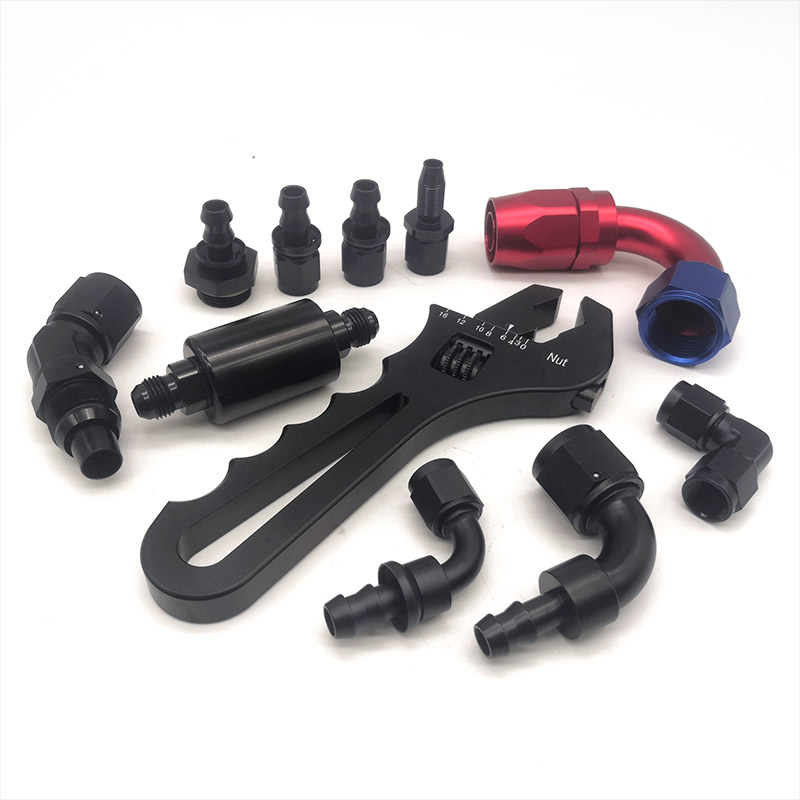15 years one-stop China custom CNC machining parts factory

Hey there I’m VMT Sam!
With 25 years of CNC machining experience we are committed to helping clients overcome 10000 complex part-processing challenges all to contribute to a better life through intelligent manufacturing. Contact us now
 225 |
Published by VMT at Jan 01 2024
225 |
Published by VMT at Jan 01 2024
In the intricate world of CNC machining, precision is paramount. When it comes to ensuring the quality of CNC machined parts, conducting air tightness tests is a crucial step. This comprehensive guide walks you through the essential steps of testing the air tightness of CNC machined parts, offering insights into the significance of the process and how it contributes to the overall quality assurance in CNC machining factories.
Introduction: Unveiling the Importance of Air Tightness Testing in CNC Machining
CNC machined parts often find applications in critical industries where air tightness is non-negotiable. From aerospace components to medical devices, the reliability of these parts hinges on their ability to maintain a sealed environment. This article delves into the significance of air tightness testing in ensuring the functionality and reliability of CNC machined parts.
Understanding the Basics: What is Air Tightness Testing in CNC Machining?
Ensuring the air tightness of CNC-machined parts is a crucial step to guarantee their sealing performance. Airtightness testing helps identify potential leaks, gaps, or defects in the parts, ensuring their reliability during assembly and use. In this article, we will provide a detailed overview of the steps involved in airtightness testing for CNC-machined parts, helping you conduct more effective tests.

Essential Tools and Equipment for CNC Machined Air Tightness Tests
To conduct a reliable air tightness test, having the right tools and equipment is paramount. This section guides manufacturers and quality control teams through the selection of appropriate testing instruments, ensuring accuracy and repeatability in the results.
Step-by-Step Guide: Conducting Air Tightness Tests on CNC Machined Parts
Phase One: Preparation
Before conducting the airtightness test, thorough preparation is essential. Start by selecting suitable equipment, including pressure gauges, gas cylinders, and air pumps. Ensure a clean and tidy testing environment to avoid interference with the results.
Phase Two: Part Preparation
Prior to the airtightness test, adequately prepare the CNC-machined parts. Check the quantity and external quality of the parts, ensuring no obvious defects or damage. Clean and dry the parts as per the airtightness test requirements to remove impurities and moisture.
Phase Three: Installation
During the installation phase, mount the CNC-machined parts onto the airtightness testing equipment. Follow the equipment requirements to correctly install the parts, ensuring tight and reliable connections to prevent air leakage. Check all seals and gaskets for integrity and promptly replace any if necessary.
Phase Four: Testing
The testing phase involves three steps: inflation, pressure stabilization, and detection. Begin by injecting gas into the CNC-machined parts using gas cylinders and pumps, achieving a specific internal pressure. Close the inflation port, monitor internal pressure using a pressure gauge, and observe pressure stability. Finally, based on testing requirements and standards, assess the airtightness performance of the parts.
Phase Five: Results Processing
In the results processing phase, evaluate the airtightness performance of CNC-machined parts based on test data and standards. If the airtightness meets requirements, deem the part as qualified. For parts with inadequate airtightness, conduct further analysis and take appropriate action, such as rework or scrapping. Investigate and analyze the reasons for non-compliance to prevent similar issues in the future.
Phase Six: Conclusion
Conclude the process by recording and organizing test results, including testing time, personnel, equipment, method, and data. Summarize and analyze any issues encountered during testing to continuously improve the accuracy and reliability of airtightness tests. Provide feedback on test results to relevant departments and individuals for handling and improvement of non-compliant parts.
In summary, airtightness testing for CNC-machined parts is a crucial quality assurance process. By following correct testing procedures and methods, potential issues like leaks or defects can be effectively detected, ensuring the reliability and safety of the parts. Additionally, maintaining and managing testing equipment is vital to guarantee accuracy and reliability. This continual improvement approach enhances the overall quality and competitiveness of CNC-machined parts.

Real-world Applications: Where Air Tightness Testing Matters in CNC Machining
Highlight the industries and applications where air tightness testing holds utmost significance. From automotive CNC components to electronic enclosures, showcase how this testing process contributes to the reliability of CNC machined parts in diverse sectors.

Conclusion: Elevating CNC Machining Quality through Air Tightness Testing
In conclusion, emphasize the integral role that air tightness testing plays in elevating the quality of CNC machined parts. Whether in a CNC machining factory or a precision manufacturing environment, the meticulous execution of air tightness tests ensures that CNC machined components meet the stringent standards of reliability and functionality.
Embark on this journey through the intricacies of air tightness testing in CNC machining, and empower yourself with the knowledge to enhance the precision and reliability of CNC machined parts in your manufacturing processes.
Ready To Start Your Next Project?
Get Instant Quote

Request a Free Quote
Send us a message if you have any questions or request a quote. We will get back to you ASAP!